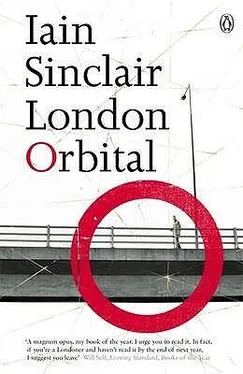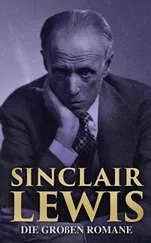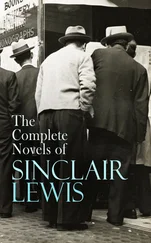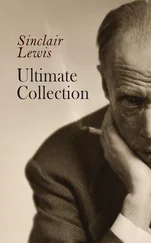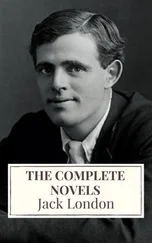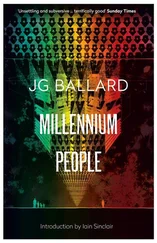O’Mahoney: ‘It’s bullshit. It’s total bullshit. I’ll put my life on it. I know for a fact that Jack Whomes and Steele did not kill those people. Everybody knows that it was the people from Canning Town.’
Whomes: ‘Those three men were shot by a marksman, an absolute precise marksman. I’ve seen every bit of evidence in the case. I’ve seen all the photographs — and they’re horrific, absolutely horrific. You have nightmares about the photographs, but you have to look, because it’s your brother there. I look at the photographs and I think they’re saying my brother did this. And I know my brother. I’ve been brought up with him. I’ve got four brothers, all close together, and there’s no way my brother could have carried that out. He wouldn’t even kill a sparrow.’
John Whomes understands: it always comes back to photographs and memory. The Rettenden killings are summarised by the image of a Range Rover parked in a country lane. Whomes had to market an alternative clip: the gantry at Junction 30. The white sheet with the painted words: FREE THEM NOW.
‘I wanted to cause a protest,’ he said. ‘They would use the footage of me up on the M25 instead of the Land Rover coming out of the lane. When they want to refer to Rettenden, they’ll have to refer back to me on the M25.’
The motorway, he knew, offered maximum visibility; ten lanes of traffic slowing to a standstill. Nothing else to look at. JACK WHOMES. INNOCENT OF RETTENDEN MURDERS. ‘People were going past, bleeping their horns, waving, putting their thumbs up. It was brilliant. It worked brilliantly.’
The two protesters stayed on the gantry, as on the bridge of a battleship; they were there from seven a.m. until lunchtime. The stunt, unlike Bill Drummond’s conceptualist scam, his dead cows hung from a pylon, worked: wide coverage, popular support. And there was an unlooked for bonus: seven hours of landscape vision, seven hours of shifting light and weather.
‘It was a strange thing, we were up there, and as you know the M25 is up and down, you can hardly hear yourself think… We were chaining ourselves up, wrapping tape to protect the gantry — and, all of a sudden, my mate Peter said, “Look what’s happened.” And it was just… you could hear a pin drop. They’d shut the road off and it wasn’t a noise at all. It was quiet. And then I thought to myself, well, that’s power. That’s a little bit of control. Now I’m in the driving seat. Now they’ve got to listen to me. It was lovely up there. It’s a wonderful road.’
Nobody, since Margaret Thatcher cut the ribbon, has known such silence. Gulls on the landfill tip. The tick of cooling engines. A lull during which the ugly ground at the road’s edge could reassert its identity.
‘You’ve got eight miles of tailback,’ Whomes said, ‘right back to the A127.’ Nothing moving. A phantom funeral procession for the ghastly Range Rover. A golden day to remember: from buying the chains at B&Q, to standing on the gantry, to being taken away in the police car. The John Whomes protest, the Swanky road rage killing, the cutting of the ribbon. Dominant images by which the memory-theatre of the M25 counters general paralysis, boredom. Iconic episodes that give structure to our amnesiac circuit.
Tucked under the neck of the Queen Elizabeth II Bridge is the ibis (lower case) hotel. On closer inspection, the ibis functions as a no-case stopover for French truckers, for migrants who are never comfortable out of reach of the motorway’s acoustic footsteps. The ibis is trilingual: French, German and Franglais. Its symbol is a drooping opium poppy. Not the vulgar Remembrance Day badge tacked to the side of the absent Lord Archer’s Lambeth penthouse, but something limp and fin-de-siècle.
The romance of trafficking enlivens the franchise. The ibis is a legitimate operation, but its proximity to the road, its slightly suspect Francophile courtesy (‘naturally, we remain at your service day and night’), lets it fly a Casablancan flag of convenience. Rick’s Café rented out to Little Chef. The restaurant area has more wine than food; you write your selection on a pad, then wait. Customers, in small tight groups, or solitary and watchful, are universally tired. An elevated TV monitor seems to be fixated on winter sports, ski jumps. Without sound. A leap into thin air: Beckton Alp or the Thurrock ramp favoured by police for pulling drug couriers.
There are other ibis hotels at Heathrow and Docklands. The look is Las Vegas-Egyptian, sand-coloured, sharp-edged. The franchise sees the world as a desert. They serve the camel routes, in the shadow of motorway dunes and flight paths. The ibis, in Egyptian mythology, is a symbol of the soul (the soul of the M25). The morning. The ibis is sacred to Thoth. The ibis bird is sometimes depicted with the crescent moon on its head, signalling a connection to the watery element.
West-facing rooms in the Thurrock ibis look straight out on the motorway, the run to the bridge. Nowhere better for that Dr Seward moment, sunset over the Esso oil tanks, the paddocks of cars; a soul-shuddering epiphany in the cell of a fly-eating lunatic. Rooms in the ibis are cells — clean, anonymous, step-in power-showers. Motorway pilgrims are drawn to the site. I visited the heavily pregnant Effie Paleologou when she carried out her twenty-four-hour ‘labour’, photographing the road from a fixed position, one shot per hour. Random TV (a silent Blair and Hague). A DeLillo ghost story. Snatched sleep.
A Zurich-based architect, Liat Uziyel, undertaking a memory-retrieval project (begun with a battered London A-Z, found in Whitechapel), conceived a building that would wrap itself around the road. A self-curating museum of dreams. The walls of Uziyel’s house of memory would be of varying thickness; sometimes solid and sometimes thin as paper. Sensors would be triggered by passing traffic. Pilgrims, who had walked to this place from the city, would cleanse themselves, before lying in alcoves; or secreting objects, handwritten messages, in apertures. The M25, Liat decided, was about erasure.
The ibis hotel was the manifestation of her vision. The noise of the road invaded sleep, penetrating the double-glazing, sending a shudder through the spine. In their furnished cells, transients scoured themselves under jets of water, just a few yards from the cabs of long-distance hauliers.
Women were drawn to the ibis, the incubation cubicles. They recognised the underlying agenda, the therapeutic prescription. The ibis dealt in elective amnesia, retreat and renewal. In every room there was a ‘Satisfaction Contract’, a ‘Keep Cool’ card that spelt out a three-step programme for the solving of mental or spiritual difficulties. ‘If, however, within 15 minutes your problem isn’t solved, we will pick up the bill.’ The ibis is a Zen centre, a monastery of the motorway. Five minutes in the lotus position, breathing deeply. Five minutes to tone up. Five minutes to relax, knees against chest. That’s it. Back to the road, refreshed. Ready to sell.
When Renchi and I walked up the bicycle lane and on to the bridge, police cars surrounded us. ‘You know you can’t cross over.’ We know. The 50 mph warning lights are flashing. Road spray soaks us. We set off in the direction of Lakeside.
Lakeside is older than Bluewater, but it’s based on the same geology: chalk. Quarrying, then defensive structures, tunnels, forts, redoubts. The fear of invasion evolves into invasion-soliciting technology, business parks and retail landfill. Lakeside has been a TV docusoap and now it’s an antiquated rehearsal for Bluewater. With its sorry Mississippi riverboat, its puddle of water, Lakeside is Mark Twain in an H.G. Wells culture.
What I like about Lakeside is the sprawl, the impossibility of navigating a path through its convoluted possibilities. They block roads, force you to detour. The retail experience is a kind of treasure hunt, a rally without maps. You get the maps, as prizes, when you achieve your destination. The maps are unreadable: a lake, a riverboat, pink grey green blue areas. House of Fraser, BhS, Bentalls, C&A, Argos, Boots, Marks & Spencer. Nobody knows how it works. You might spot Ikea on the horizon, but you’ll never find the secret entrance. Not the first time. (And if you do make it, you need a native guide to explain the system. The sets, mock-up offices and kitchens and bedrooms, which are not for sale. The huge, healthy Swedish hike through pine furniture is compulsory, a training regime before you’re allowed into the warehouse. What fascinated me were the books: real books in fake rooms, rows and rows and rows of Swedish editions of Patricia Highsmith.)
Читать дальше
